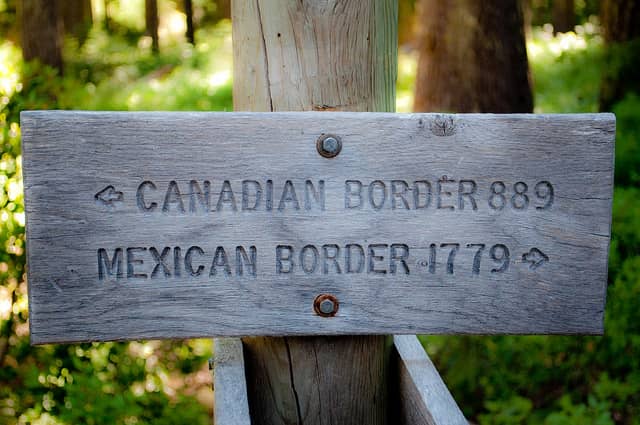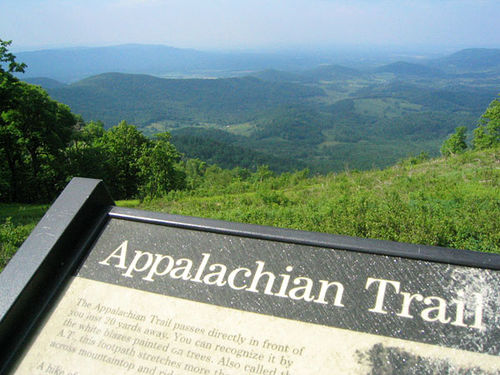Jackie McDonnell on Preparing for a Long-Distance Hike
Agnieszka Spieszny 08.09.11

It doesn’t matter whether you’re hiking 2,000 or 200 miles, you should keep these tips on adequate preparation in mind. The preparation will vary depending on the hiker and the terrain you will be hiking. For instance, you will need more bug spray in the woods, but more heat-insulation in the desert for the chilling nights. For the most part, however, these tips apply across the board.
I spoke to Jackie McDonnell for her first-hand knowledge on long-distance hikes. She has hiked a total of 15,000 miles in her life (quite an accomplishment!) on the Appalachian Trail, Continental Divide Trail, Pacific Crest Trail, and other shorter trails.
First and foremost, McDonnell says that the bulk of preparation for the hike is mental. Out of all people who attempt long-distance hikes, it’s most often mental rather than physical issues that cause one not to finish a hike. She says it is mentally hard for some people to be at the mercy of the weather. Also, realize you’re going to be away from your family/friends for a weeks or months at a time – and not everyday will be easy and fun.
“It is a whole new world. And you leave everything that you knew, that defined you before – you leave that behind. It doesn’t matter what your occupation was, how old you are, where you grew up, if you were privileged or not privileged. Everybody’s equal out on the trail.”
If you’re ready to take that on, then start by walking a few miles a day (about 6) as part of your exercise regimen.
Packing & Shelter
Pack light, but pack the essentials. Each hiker is different and may require different tools such as poles or no poles, tent or no tent, etc. One pair of adequate shoes is enough. Unless you’re a barefoot hiker, of course. McDonnell wears running shoes and not boots.
You’ll need portable shelter, whether it’s a tent or a tarp you can hang through tree branches. You’ll need something to shield yourself from the rain. A sleeping bag and warm clothes are necessary to avoid hypothermia, even in hot deserts where temperatures fall near freezing at night.
Those are the essentials, although McDonnell recommends a sleeping pad as well for extra insulation against the cold ground. Generally bring gear that is breathable in case it gets wet, so that it dries fast.
“There’s a saying that you can hike comfortably, or camp comfortably. People that like to camp comfortably have really heavy packs. People that like to hike comfortably have lighter packs. If there’s 15 hours of daylight in a day, and I’m spending 13 hours of that walking with my pack on, I want to hike comfortably!”
Food
“Believe it or not, Snickers bars are the perfect hiking food. Snickers have the perfect combination of carbs, fat and protein,” says McDonnell. When she’s not eating Snickers bars, she recommends foods that can be boiled or cooked in water: noodles, rice or couscous. Grains and dehydrated veggies also work. Men and women vary in nutritional needs on a hike, especially because of the almost 6,000 calories burned on a day of hiking like this. She recommends a website with information on nutrition for long-distance hikes. Keep in mind that it’s best to eat small meals throughout the day, about every 1.5 hours, instead of three big ones.
Finances
McDonnell advises, “It’s not cheap when you put into perspective the lost income when being gone for five months. Although the hike itself is not expensive. Once you have the gear, it’s about 8 to 10 dollars a day.” That money is the average cost of resupplying food while on the journey and the potential stay in a motel once every few days. Don’t forget to factor in the cost of transportation to and from your destination. And sorry for the sobering reminder, but you still have bills to pay at home.
Permits
In certain places you need permits. There are usually self-service permit stations as you enter a permit-required area. Some trail organizations, like the Pacific Crest Trail Association, have made a deal with national parks and forest services that issue a blanket permit to cover any territory that necessitates a permit. They are meant to register hikers so that parks can receive funding from the federal government for trail maintenance. McDonnell has been stopped and asked for her permit, though has never met anyone who has been fined for not having one.
Other Considerations
- Unless you’re going by yourself, then it’s important to partner up with a hiker-friend whose fitness level is similar to your own. You won’t fare well if one is pushing the other too hard to reach a certain goal and the other is angry at his partner’s incompetence.
- Carry enough food to last you at least five days. Trails farther out west are less likely to have as many resupply shops. For those trips be prepared for even 10 to 12 days without outside supplies.
- Bring a walkie-talkie or cell phone in case of emergencies. Don’t veer off the trail. If you do get hurt, sit down where you are because someone will likely come along the trail within four hours.
- Take care of yourself. “If you see a storm coming and you’re heading above the tree-line, you shouldn’t go up there,” McDonnell says. Don’t rush getting to one place in exchange for your safety.
Beyond all the preparation, a trip like this could be the experience of a lifetime. Seeing the terrain change slowly before your eyes, encountering all the wildlife inhabiting the trail and truly living outdoors for weeks at a time. McDonnell says she hikes because she’s free on the trail. She doesn’t have to answer to anyone or anything and just does what she wants to do each day. A feeling we all strive for daily is attainable on the long stretch of trail before you.
Many thanks to Jackie McDonnell for her expertise and tips. Check out her website here.
For more information specific to trails, check out these sites:
List of National Scenic Trails
For a guide on stretching on the hike, check out our Stretching During A Long-Distance Hike how to.


